On a snowy day in February 2008, the mummified hadrosaur Dakota arrived at the North Dakota Heritage Center in Bismarck without fanfare. It arrived in two large blocks and a few smaller packages. It had been trucked all the way from the NASA lab in southern California, where it had been CAT scanned.
We had to rent the largest forklift we could find in Bismarck to move the largest block (the body block) from the truck into the building. Despite this block weighing in excess of two tons, it was moved safely and without incident.
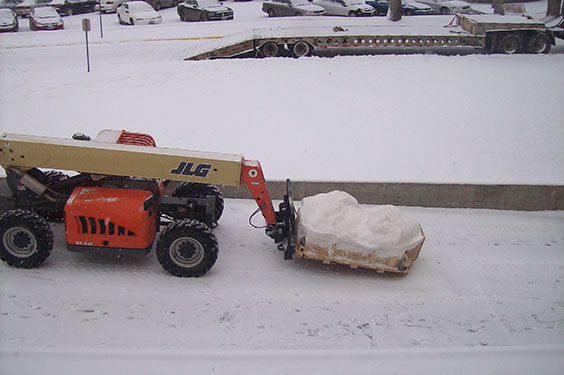
Dakota being moved into the ND Heritage Center in 2008. The largest forklift we could rent in Bismarck had to be used to move the largest block of Dakota, the body block.
Dakota was then ushered down a long hallway into the paleontology lab, where paleontologists and specialists spent years removing hundreds of pounds of rock from the block encasing the never-before-seen dinosaur skin. A few years later, as work on the ND Heritage Center expansion began, Dakota was moved to a temporary home to keep it out of harm’s way. It retraced its path back down the same hallway it had travelled just a few years prior to a secondary lab next to the loading dock, where it had originally entered the building.
Over the next year, even more rock was removed from the large body block while we waited for the time to be right to move Dakota once again. That time came during summer 2013. Dakota travelled from its temporary home in the secondary paleo lab, once again down the same hallway.
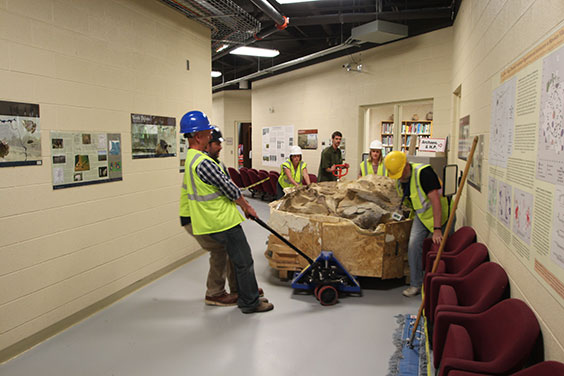
Moving Dakota in 2013. This trip would take the block upstairs and into the hallway for exhibit.
This time, it was only to the freight elevator, a few short feet from where it once sat for nearly five years while specialists chipped away at rock, exposing fossilized skin. After a quick trip up the elevator, it was slowly moved toward its home in the Corridor of History outside the State Museum’s Adaptation Gallery: Geologic Time.
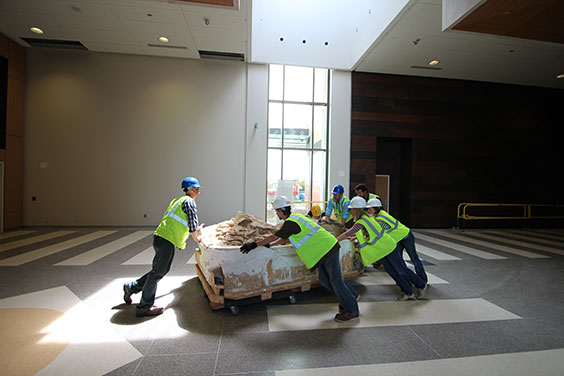
Getting the final placement of Dakota for exhibit correct. This was done during the final touches on the ND Heritage Center expansion.
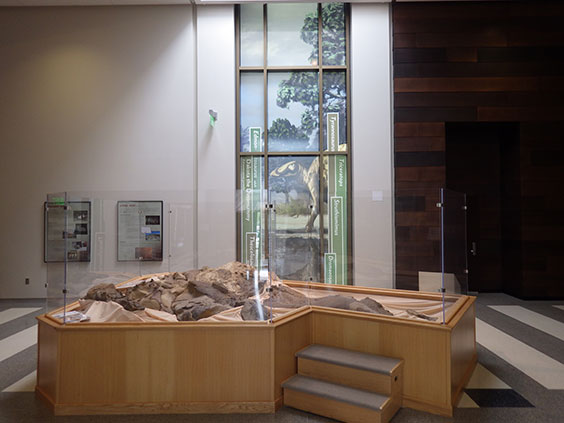
View of Dakota on exhibit from 2013 to 2019.
For the next six years Dakota sat on exhibit where tens of thousands of visitors a year gazed upon its exposed dinosaur skin, 66 million years in the making.
Our goal is to help the public best understand how important and rare Dakota is. Because of the skin preservation, Dakota has taught and is teaching us a great deal about dinosaurs we didn’t previously know. In order to better educate the public, we needed to revamp the Dakota exhibit. That means the larger body block needed to move . . . again. Many changes are happening to the Dakota exhibit, the largest of which has been the removal of the body block from display.
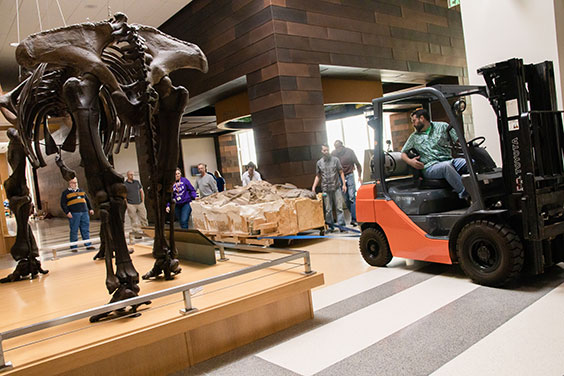
Hauling Dakota down the ND Heritage Center & State Museum hallway toward the freight elevator. Wheels were permanently attached to Dakota to make it possible to haul with the forklift.
In late October 2019, the large body block was removed from exhibit and carefully wheeled down to the North Dakota State Fossil Collection room in the ND Heritage Center & State Museum lower level.

Dakota coming out of the freight elevator, on its way toward the paleontology lab and collections.
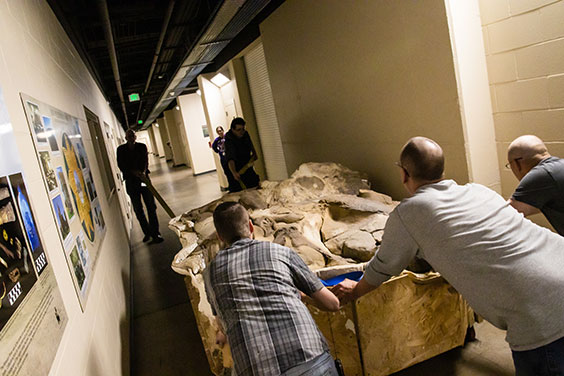
The last leg of Dakota’s journey was down this long hallway and into the paleontology lab.
The tail block, arm, and foot pieces will be moved back upstairs into a newly revamped exhibit that will be unveiled in the coming months.
Please come and visit us in spring 2020 and see all the changes to the Dakota exhibit.

